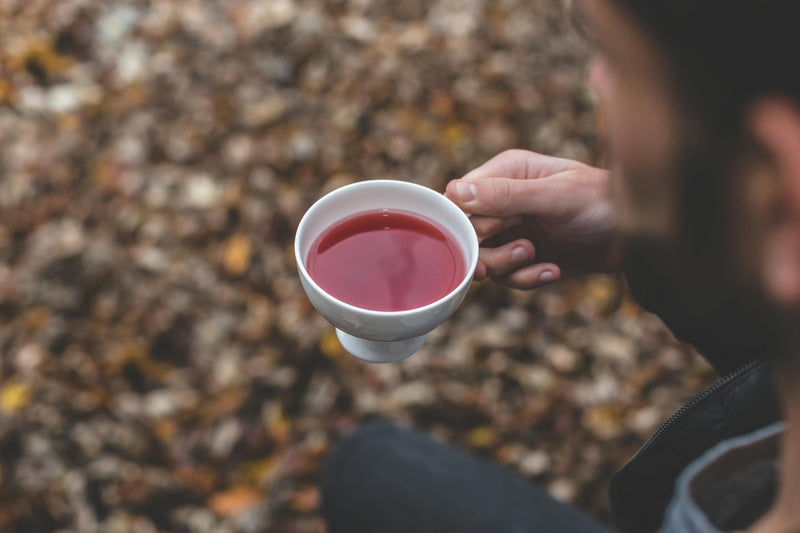
You might think, "Why do I need guidance on tasting tea? I've been enjoying it all my life!" But tasting tea is an art, a skill worth honing. Delve into the world of tea appreciation with Ekön Tea, where we unveil the secrets to identifying distinct flavor profiles and maximizing your enjoyment of our premium blends.
Just like fine wine, chocolate, or coffee, the taste of tea is influenced by its environment, cultivation, and processing methods. These nuances render each tea blend unique, imbuing it with body, character, aroma, and health benefits.
Our team at Ekön Tea comprises professional tea connoisseurs who have dedicated years to refining their tasting expertise. For us, mere 'tea drinkers,' it takes time and practice to develop a sophisticated palate.
This guide serves as your companion on a journey to unravel the taste, flavor, and aroma of our teas. By utilizing this resource, we aim for you to become our trusted partners, providing valuable feedback during the creation of new blends.
Appearance, Aroma and Flavor
When embarking on a tea-tasting adventure, we focus on four essential elements: appearance, aroma, flavor, and mouthfeel. These pillars of tea tasting trace their origins to the ancient Chinese tea ceremony, emphasizing the importance of a holistic sensory experience.
First Impressions Matter
As a tea enthusiast, the initial inspection of dry tea leaves is crucial. Surprisingly, much of our overall impression is formed by the tea's appearance:
- Shape: Are the tea leaves small or large?
- Color: Does the tea exhibit uniform coloration or various hues, indicating a blend?
- Texture: Is the tea finely ground, crumbly, or sticky?
- Presence of Tea Buds: Are there any discernible tea buds?
Signs of Quality Loose Tea: In black, white, and green teas, look for gold or bronze flecks, indicating young leaves known as 'tippy.' The tea should crunch between your fingers, indicating it hasn't absorbed excess moisture.
Brewing Perfection
Consistency is key in tea tasting, necessitating adherence to set standards. At Ekön Tea, we follow a standardized approach to ensure uniform tasting experiences:

- Tea Quantity: Measure 2 to 3 grams of tea per serving.
- Water: Use water of your preference, whether tap or bottled.
- Teaware: Opt for pure, white or glass teaware to appreciate the tea's color and depth.
- Brewing Time: Steep the tea for three and a half minutes to extract optimal flavor. Mastering the delicate dance of water temperature is crucial for extracting the nuanced flavors of different tea varieties.
- For a bold and invigorating black tea, let the water reach a rolling boil at 212°F (100°C). Steep the tea leaves for 3-5 minutes, allowing the rich flavors to unfold.
- If you prefer a more delicate cup, the art lies in maintaining water at 175°F (80°C) for green tea. Let the leaves dance in the water for 2-3 minutes, unveiling a symphony of freshness.
- Avoid over-squeezing tea bags to prevent bitterness from tannins.
Observing the Infused Tea
Upon brewing, evaluate the tea's infusion, known as 'liquor.' Focus on:
- Color: Look for a vibrant, jewel-like hue.
- Physical Appearance: Seek a shiny, slightly oily texture.
- Clarity: Examine the wet leaves for plumpness and integrity.
Now, let's indulge in the taste...
The Science of Tasting
Contrary to popular belief, taste perception relies heavily on smell. Up to 90% of flavor is detected through olfaction. Our taste buds discern five primary tastes: sweet, salty, acidic, bitter, and umami.
The olfactory gland, located behind the eyes and nose, captures scent molecules, enriching our tasting experience. A combination of neural signals from taste buds and olfactory receptors enables rapid flavor recognition.
Aroma Exploration
Given the significance of smell in taste perception, delve deeply into the tea's aroma. Experiment with two sniffing techniques:
- Deep Inhalations: Hold the brew close to your nose and take a deep breath.
- Dog Action: Engage in rapid, shallow inhalations, akin to a panting dog.
Utilize Ekön Tea's flavor wheel to identify aromatic nuances, laying the foundation for taste exploration.
Tasting and Slurping Technique
Embrace the unconventional as you taste and slurp your tea:
- Spoon up the liquor.
- Inhale deeply.
- Slurp the liquid from the spoon, allowing oxygen to enhance flavor.
- Exhale through your nose.
- Savor any taste sensations, noting sweetness or bitterness.
Now, let's delve into the flavor...
Flavor Analysis
Not all flavors manifest simultaneously; instead, they unfold in layers. Identify three distinct flavor notes: head, body, and tail, using Ekön Tea's flavor wheel for guidance.

- Head Notes: Initial impressions that rapidly captivate the palate.
- Body Notes: Overall impression and lasting character.
- Tail Notes: Lingering aftertaste indicative of complexity and quality.
Craft your flavor description using the taste wheel as a reference.
Assessing Mouthfeel

Mouthfeel, though often overlooked, influences taste perception. It encompasses sensations experienced in the mouth, such as smoothness or astringency.
Refer to Ekön Tea's taste wheel to articulate your mouthfeel experience, solidifying your connection with the tea.
Embark on your tea-tasting journey with Ekön Tea, where each sip unveils a world of flavor and aroma.





